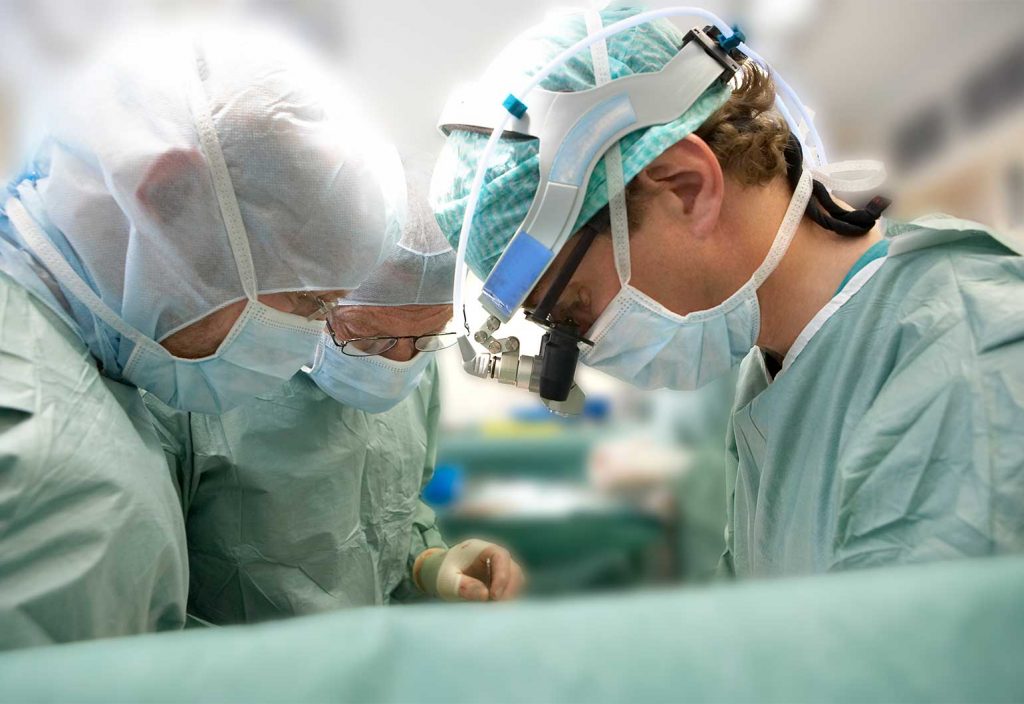In a world-first, a multidisciplinary Australian team has developed a safe and effective way to perform keyhole heart valve replacement surgery that works even for the most high-risk patients.
Narrowing of the valve that controls blood flow from the heart, known as aortic stenosis, is one of the most common heart valve diseases, with up to one in eight older Australians affected.
It is also the most serious. Without surgery, about half of all people with severe aortic stenosis die within two years.
One of the greatest developments in the treatment of heart disease has been the development of transcatheter aortic valve implantation (TAVI) to treat aortic stenosis.
Interventional cardiologist Professor Martin Ng told create TAVI has revolutionised cardiovascular medicine by enabling surgeons to replace heart valves without open heart surgery.
“During each TAVI procedure, a valve has to be expanded in place within the aortic annulus. If the new valve is over-expanded, there is a risk of causing catastrophic aortic rupture,” he said.
“On the other hand, if a valve is under-expanded, there is a risk of paravalvular regurgitation, which places the patient at long term risk of heart failure and death. To date, the optimal method to control deployment of a transcatheter valve is not fully elucidated.”
Ng has taken TAVI further, leading a ground-breaking research program to significantly improve the procedure by addressing its key limitations.
The replacement heart valve needs to fit exactly once expanded. If it is not expanded enough, the patient risks a leak, and if it is expanded too much it ruptures the aorta. This makes it vital to determine the correct pressure to achieve the perfect fit.
“We came to hypothesise that the interaction between the aorta and the prosthetic valve during deployment would be determined by physical forces,” Ng said.
“Identifying the optimal pressure to deploy each valve would ensure that we could land on the ‘sweet spot’ for each patient. [That is], the optimal expansion of the percutaneous valve such that leak was minimised but prevention of excessive expansion and rupture.”
The journey to this idea was facilitated by the late Australian Professor Geoffrey White, a vascular surgeon and innovator who developed a balloon-expandable stent-graft for treatment of abdominal aortic aneurysms.
“In experiments in animals and cadavers, he showed that the interaction between the prosthesis and the human aorta was dependent on the wall tension between the device and the aorta,” Ng said.
“We took Geoff’s lead in the abdominal aorta and sought to apply it in TAVI to develop a new method for transcatheter heart valve deployment.”
Only the beginning
Cardiovascular disease remains the number one cause of death worldwide, but research into effective procedures is difficult and requires multidisciplinary assistance.
“The development of a biomechanical model that would allow us to translate pressure data at valve deployment into wall tension data required that we seek collaboration with engineers,” Ng said.
“While Pascal’s law is not difficult to understand, we were keen to make sure that our biomechanical model would be reasonably robust and allow us then to develop a new clinical protocol to deploy valves that would improve TAVI results.”
One of Ng’s team members, PhD candidate Dr Afik Snir, was able to draw on his biomedical engineering degree for the research, helping translate the deployment data from the theatre into a biomechanical model. Meanwhile, University of Sydney mechanical engineer Dr Lining Ju and his team helped them oversee the model development.
“We will continue to work with Dr Ju’s group to see whether we can further refine our understanding and control of the forces during transcatheter valve deployment so that we can further improve results,” Ng said.
“We are at the beginning with TAVI. Further studies, including randomised trials comparing conventional techniques will be needed to further flesh out the value of our innovation.”
Ng also sees further applications for the breakthrough.
“Many other medical devices are deployed by expansion into body cavities and lumen, including vascular and other endoluminal stents,” he said.
“We hypothesise that the strategy we have described here may have value in these other fields. These are exciting times.”
Putting modelling in place
Yunduo Charles Zhao, from the University of Sydney’s School of Biomedical Engineering, explained that TAVI is a method that deploys artificial valves into the cylindrical annular to replace the calcified tissue.
“From the biomechanics perspective, the implantation procedure induces significant wall tensions to the smooth muscle-rich annular, which can be simplified using the well accepted Laplace’s Law,” he said.
“Our analysis shows that the application of this simplified model delivers statistically significant results and is convincingly associated with efficacy and safety outcomes.”
Zhao’s supervisor, Lining Arnold Ju, ARC DECRA fellow at the School of Biomedical Engineering added that next year the university is opening a purpose built hub for biomedical engineering to contribute to further breakthroughs.
“The future direction is to integrate the clinical cardiac images and our 3D reconstruction and computational simulation platform to thoroughly map how forces cause leakage or rapture during TAVI surgery,” he said.
“Since the aortic root complex has calcified leaflets +/- annular/LVOT calcification, the location and severity of calcium also affect the wall tension during valve inflation.
“Our new biomechanics laboratory is able to combine the state-of-art microfluidic platforms and biomechanical nanotools to model the cardiovascular biomechanics and mechanobiology in thrombotic diseases and cardiovascular interventional surgery such as TAVI procedure,” he added.
